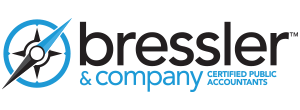Tax Tips about Home Mortgage Debt Cancellation
If you received mortgage debt cancellation from your home lender last year, you normally will have to pay tax on that amount.
However, the law provides for an exclusion that may apply to homeowners who had their mortgage debt cancelled in 2014. In most cases where the exclusion applies, the amount of the cancelled debt is not taxable. Here are the top 10 tax tips about mortgage debt cancellation:
1. Main Home. If the cancelled debt was a loan on your main home, you may be able to exclude the cancelled amount from your income. You must have used the loan to buy, build or substantially improve your main home to qualify. Your main home must also secure the mortgage.
2. Loan Modification. If your lender cancelled part of your mortgage through a loan modification or ‘workout,’ you may be able to exclude that amount from your income. You may also be able to exclude debt discharged as part of the Home Affordable Modification Program, or HAMP. The exclusion may also apply to the amount of debt cancelled in a foreclosure.
3. Refinanced Mortgage. The exclusion may apply to amounts cancelled on a refinanced mortgage. This applies only if you used proceeds from the refinancing to buy, build or substantially improve your main home. Amounts used for other purposes don’t qualify.
4. Other Cancelled Debt. Other types of cancelled debt such as second homes, rental and business property, credit card debt or car loans do not qualify for this special exclusion. On the other hand, there are other rules that may allow those types of cancelled debts to be nontaxable.
5. Form 1099-C. If your lender reduced or cancelled at least $600 of your debt, you should receive Form 1099-C, Cancellation of Debt, in January of the next year. This form shows the amount of cancelled debt and other information.
6. Form 982. If you qualify, report the excluded debt on Form 982, Reduction of Tax Attributes Due to Discharge of Indebtedness. File the form with your federal income tax return.
7. IRS Free File. IRS e-file is fastest, safest, and easiest way to file. You can use IRS Free File to e-file your tax return for free. If you earned $60,000 or less, you can use brand name tax software. The software does the math and completes the right forms for you. If you earned more than $60,000, use Free File Fillable Forms. This option uses electronic versions of IRS paper forms. It is best for people who are used to doing their own taxes. Free File is available only on IRS.gov/freefile.
8. IRS.gov tool. The IRS has several free tools on its website to help you file your tax return. Use the Interactive Tax Assistant tool on IRS.gov to find out if your cancelled mortgage debt is taxable.
9. Exclusion extended. The law that authorized this exclusion had expired at the end of 2013. The Tax Increase Prevention Act extended it to apply for one year, through Dec. 31, 2014.
10. More Information. For more on this topic see Publication 4681, Canceled Debts, Foreclosures, Repossessions and Abandonments.
Additional IRS Resources:
- Tax Topic 431 – Canceled Debt – Is It Taxable or Not?
- The Mortgage Forgiveness Debt Relief Act and Debt Cancellation
- Home Foreclosure and Debt Cancellation
All of this can be very confusing and difficult to understand. Bressler & Company CPA’s in Lemoore, California is highly trained and skilled in all the new tax laws and will not only relieve all your headaches trying to deal with these issues, but will make sure your tax return is prepared correctly.
Give us a call at 559.924.1225 to set up an appointment to discuss your tax return, or fill our our tax organizer and simply swing by our office and drop it and all your paperwork off. We’ll give you a call if we have any questions when preparing your return.
Don’t procrastinate! Our deadline to get your paperwork in is March 24 to guarantee it’s filed by April 15!
Recent Posts





